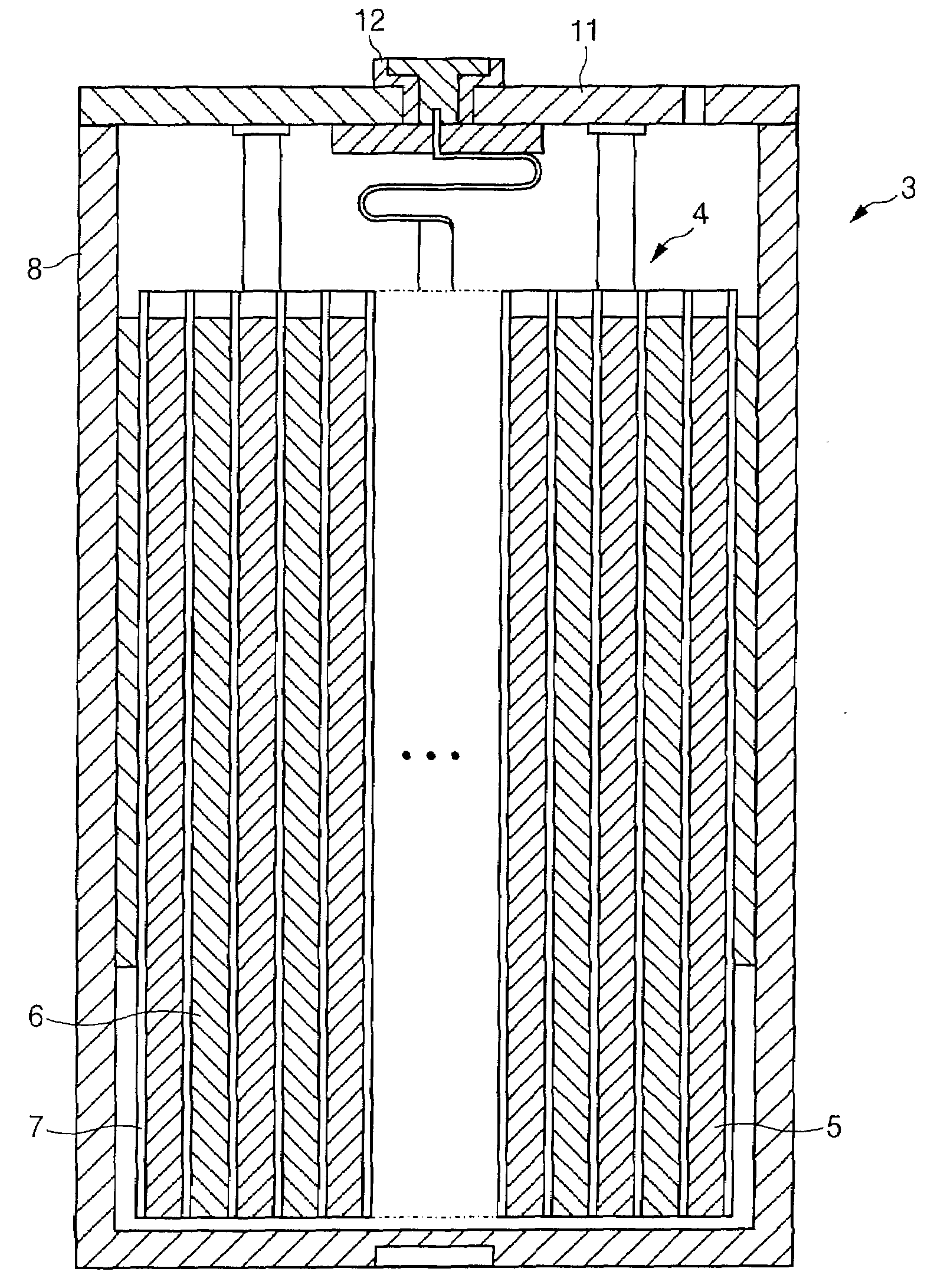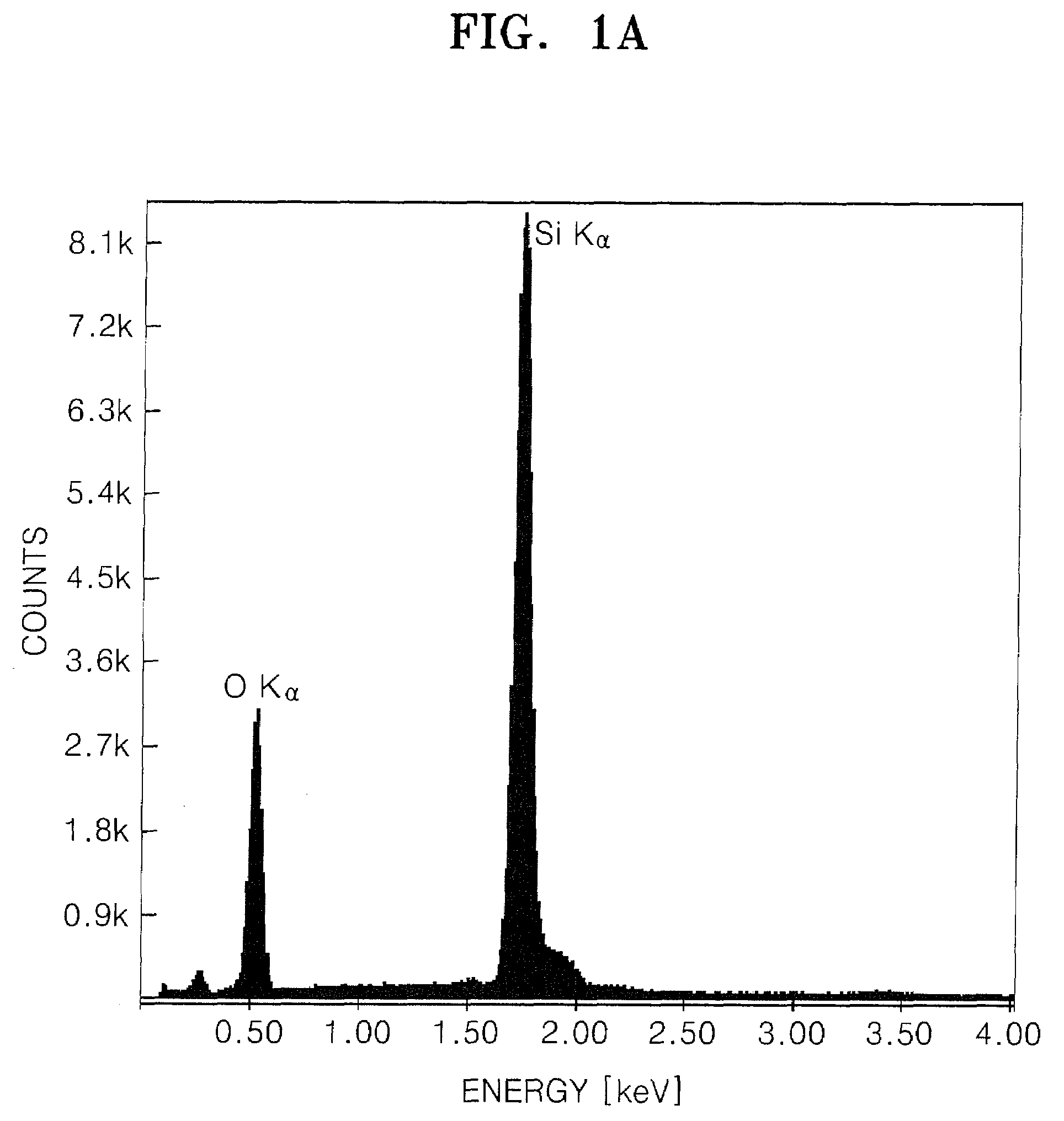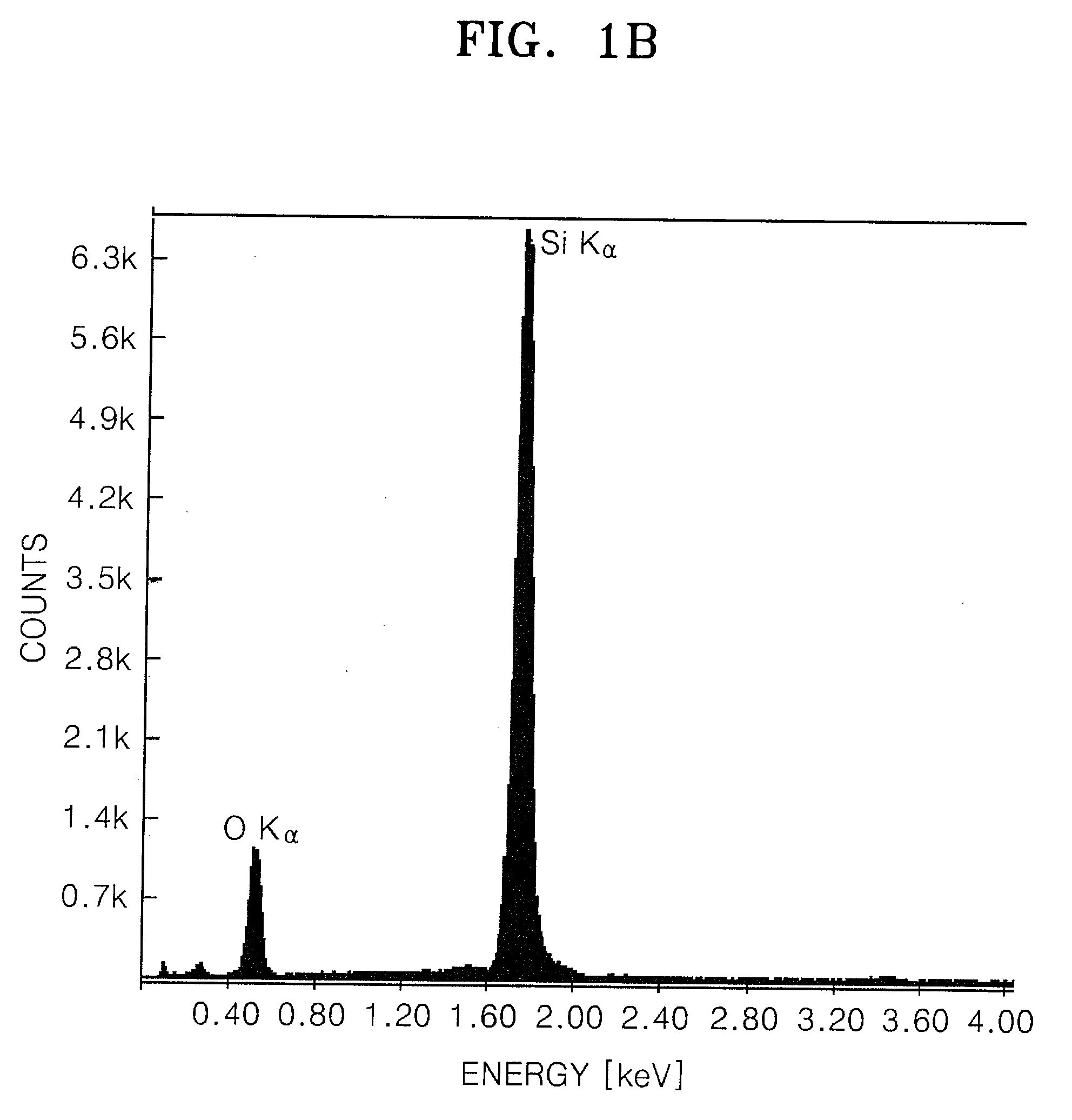Anode active material, method of preparing the same, anode and lithium battery containing the material
- Summary
- Abstract
- Description
- Claims
- Application Information
AI Technical Summary
Benefits of technology
Problems solved by technology
Method used
Image
Examples
example 1
[0057]A 1.05 g piece of a 0.53 mm thick Li film and 30 ml of tetrahydrofuran (THF) were added to a 100 ml flask and mixed. The mixture was then placed in an ice bath. Then, 5 cc of trichlorosilane (HSiCl3, Aldrich) was added to the flask and the mixture was reacted for 24 hours. 10 ml of ethanol was slowly added to the mixture and reacted for 3 hours. The resulting product was filtered using a 0.5 μm filter, washed sequentially with ethanol, distilled water and acetone, and dried in an oven at 60° C. to obtain a partially oxidized silicon oxide precursor. The silicon oxide precursor was heat-treated at 900° C. in a nitrogen atmosphere to obtain a silicon oxide.
example 2
[0058]0.2 g of the silicon oxide precursor prepared according to Example 1 and 0.08 g of pitch were mixed in 10 ml THF. The solvent was evaporated for 1 hour while the mixture was sonicated and stirred. The dried resulting product was heat-treated at 900° C. in a nitrogen atmosphere to obtain a silicon oxide coated with a carbonaceous material.
example 3
[0059]A 1.05 g piece of a 0.08 mm thick Li film and 30 ml of tetrahydrofuran (THF) were added to a 100 ml flask and mixed. The mixture was placed in an ice bath. Then, 5 cc of trichlorosilane (HSiCl3, Aldrich) was added to the flask and the mixture was reacted for 24 hours. 10 ml of ethanol was slowly added to the mixture and reacted for 3 hours. The resulting product was filtered using a 0.5 μm filter, washed sequentially with ethanol, distilled water and acetone, and dried in an oven at 60° C. to obtain a partially oxidized silicon oxide precursor. Then, 0.2 g of the silicon oxide precursor and 0.08 g of pitch were mixed in 10 ml of THF. The solvent was evaporated for 1 hour while the mixture was sonicated and stirred. The dried resulting product was heat-treated at 900° C. in a nitrogen atmosphere to obtain a silicon oxide coated with a carbonaceous material.
PUM
 Login to View More
Login to View More Abstract
Description
Claims
Application Information
 Login to View More
Login to View More - R&D
- Intellectual Property
- Life Sciences
- Materials
- Tech Scout
- Unparalleled Data Quality
- Higher Quality Content
- 60% Fewer Hallucinations
Browse by: Latest US Patents, China's latest patents, Technical Efficacy Thesaurus, Application Domain, Technology Topic, Popular Technical Reports.
© 2025 PatSnap. All rights reserved.Legal|Privacy policy|Modern Slavery Act Transparency Statement|Sitemap|About US| Contact US: help@patsnap.com



